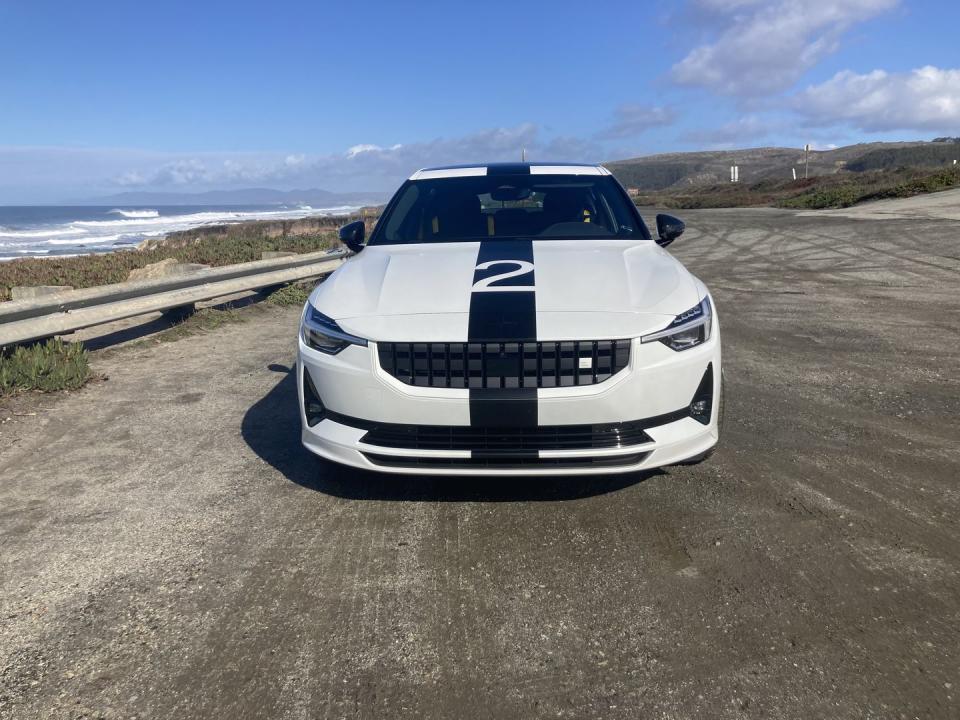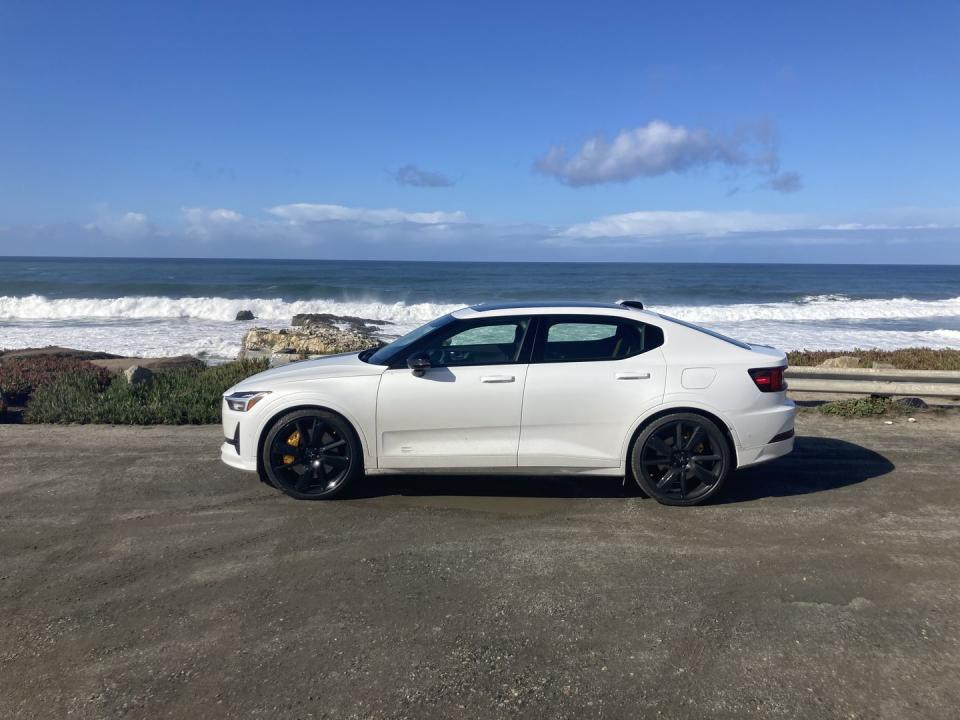The Polestar 2 BST Edition Is a Hot-Rod Production EV You Can’t Buy

Most automotive executives are not morons. They are, generally speaking, smart folks. The people at Polestar certainly are. They knew that if they took a driver like me, put me in a new model with ample power and spirited handling, and matched that car to the perfect road chosen to highlight the vehicle’s specific strengths, they’d end up with a positive review. Which is what you’re reading right now. But…there is more to this story. Much more.
It starts on a stretch of Highway 84 in rural California, south of the Bay Area. Polestar has me in their new 2 BST edition 270. I am on a road shaped like a never-ending rollercoaster ride, with dips and bends and camber idiosyncrasies. Almost no traffic. Warm air, windows down. Shafts of sunlight pierce the tree canopy, making sections of the road appear golden. This all-electric vehicle is adjustable in countless ways, and right now, the regenerative feedback is tuned to standard. What that means is, I can put tons of power to the pavement while constantly adjusting my speed, without ever touching the brake pedal. Smooth acceleration slingshots me through bends and into short straights. Then it’s off the throttle and the car brakes itself while charging its battery as the next turn approaches. Then, boom! Back on the throttle. It feels not so much like driving the car, but dancing with it.

The feeling is transcendent, and doesn’t end when I step out to snap photos at an opening in the woody hills that leads down to the Pacific. What car doesn’t look beautiful when it’s sitting in front of crashing ocean waves? Still, this one adds nuance to a sort of standard sport sedan packaging—at least to my eyes. I find it pretty, in an understated way, especially how the black forged wheels wink at the black sideview mirrors against the Snow white paint.
What exactly is the point of this car? The BST edition 270 represents how much performance Polestar is able to engineer into its mainstream Polestar 2 sedan. “This is our interpretation of how sporty this car can get,” says JP Canton, Polestar’s head of communications.
Polestar is, of course, Volvo’s venture into electric vehicles. The stand-alone nameplate originates from the Swedish touring car racing championship team. The company launched in 2017 with the Polestar 1—an all carbon-fiber bodywork EV claiming the longest range of any plug-in on the market, at that time. Only 1,500 were built, at roughly $150,000 apiece. Then came the mass-market Polestar 2 (base price $48,400 for the single motor front wheel drive version, $3,500 more for the dual motor all-wheel drive), in 2019, which is the model you have probably seen on the road. The new BST edition 270—listed at $75,500—is the hot-rodded iteration of the Polestar 2 dual motor AWD.
It was built by “engineers who love doing things above the ordinary,” says Christian Samson, a lead brain on the car who speaks with a Swedish accent so thick, it’s a constant reminder that Polestar was developed under the Volvo umbrella. The company built the BST iteration as an experiment, “to push the boundaries of electric performance.”

“We handed the car out to our CEO, you know, and said, ‘You should try this car. You know, back and forth to your meetings,’” Samson says. “And he loved it. He said, ‘Why don’t we do this?’ So we did.”

 Yahoo Autos
Yahoo Autos 